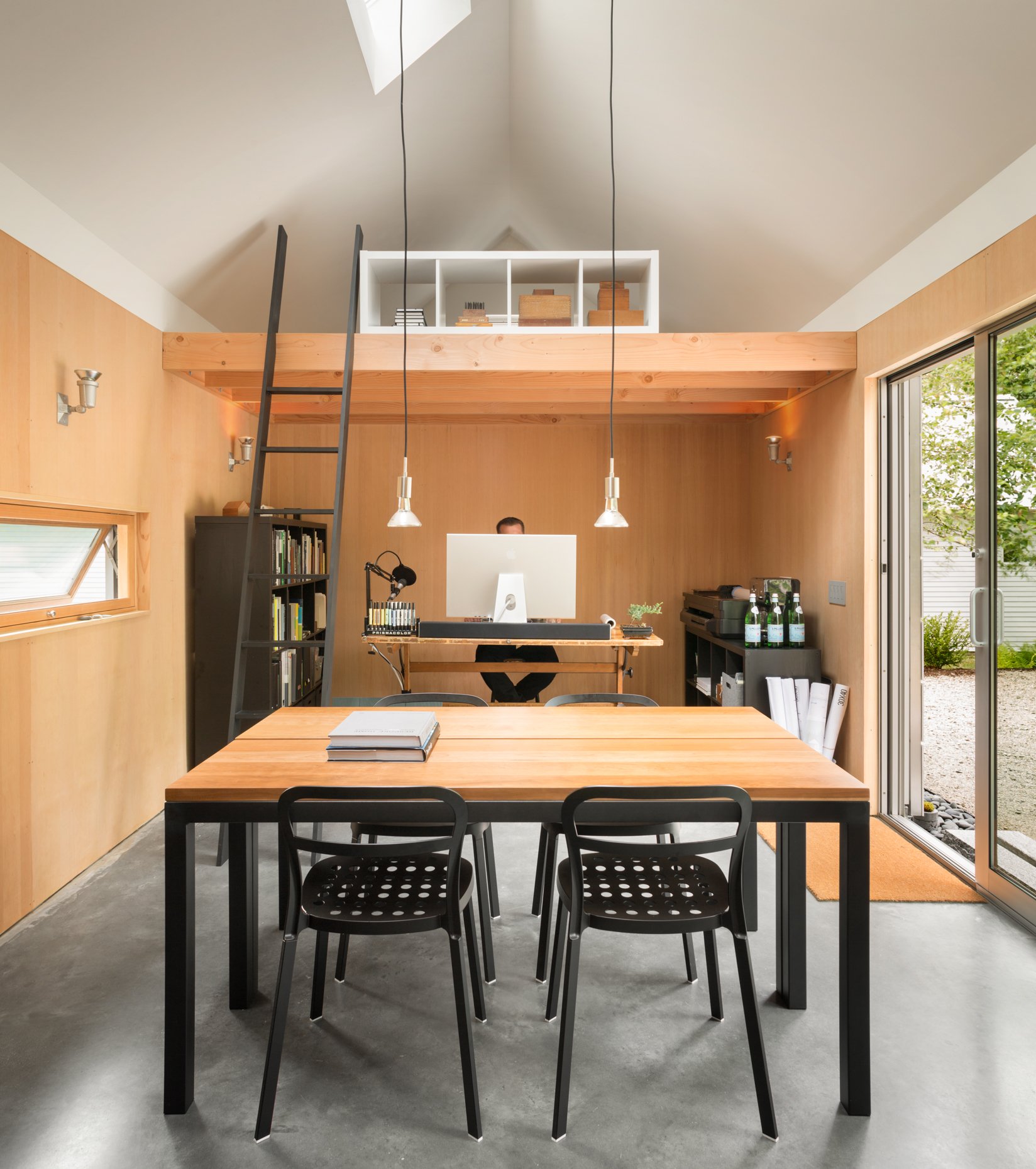My commute today is just 17-steps from my front door to my studio. Having commuted at least two hours a day for over seventeen years, this was entirely intentional. Designing and building the LongStudio is among the best business decisions I’ve ever made.
But I didn’t start there.
I started where many design professionals do: working from a corner of my living room. Each night, I’d retire to my couch just a few feet away and stare at my drafting table. Recaptured commuting time made me feel more productive than ever, but the inability to escape the pull of work responsibilities was mentally taxing. Working from home - as the pandemic taught us - can be both a blessing and a curse.
Every client meeting held at my dining table meant I had to pre-clean the house beforehand. And, because I designed my home, it served as a living portfolio piece always open for tours. Turns out keeping my home in a museum-like state of cleanliness with two teenage boys for 5 of every 7 days just isn’t possible.
I remember the day mid-meeting with a potential client our cat - Gimli - decided to claw his way from bottom to top - wedged in between the couch back and the slipcover. In between my attempts to extract the writhing lump of animal and a string of apologies, the would-be clients excused themselves saying they’d reach out to ‘reschedule.’
Yet another lost project.
It was time for a change.
how do you know when it’s time?
Initially, operating from home keeps business costs low, I was glad to allocate every available dollar towards setup costs, website development, software, insurance, and marketing rather than rent. After all, I wasn’t sure I was capable of turning a profit, I needed an MVP (minimum viable product) and that didn’t include signing a long-term lease.
As my business secured more commissions there were four things things that suggested it was time to find a dedicated studio space.
01:
Meeting clients in a home setting or random locations no longer aligned with my brand image. When your architectural business starts to thrive, gain a positive reputation, and you’ve adjusting rates accordingly, it may be time to establish a commercial presence. Operating from a dedicated studio space enhances the perception of professionalism and credibility within your industry. Meeting clients in a designated space elevates your authority and facilitates relationships with builders, architects, and higher-end market segments. Clients seeking to hire you for a $2M new build will certainly be meeting with other architects with dedicated studios. Like it or not, you’re competing with these design professionals too.
02:
I started to outgrow my corner office in the living room. The size of my sample library became unmanageable, I desperately needed a dedicated meeting space and a place I didn’t have to declutter and reset at the end of each day. As my projects increased in scope and scale, I started accumulating a wider range of material samples, finishes, stone, wood, hardware options, fabrics, flooring samples, and these quickly overwhelmed my living spaces. Waiting helped me to learn what I needed more of (dedicated work, meeting and material storage spaces) and what wasn’t important (file or drawing storage). Having a dedicated studio space with a functional, organized sample library was invaluable, saving me time designing and meeting with clients and I could reclaim my home storage areas for their intended purpose.
03:
If you've expanded your practice to employ staff, working together in a home office becomes inefficient. Collaborative work thrives on in-person interaction, which can be difficult to achieve in a typical home office environment, such as a spare bedroom or worse: your living room. Renting a commercial space that accommodates your growing team fosters better communication, facilitates access to project materials, enhances overall productivity and adds an air of professionalism that a home office can’t match.
04:
Family dynamics can also influence the viability of working from home. Distractions and interruptions from your children, teens, aging parents, or a partner also working from home can hinder productivity and impact your mental well-being. Renting an office or studio space provides separation between your home and work life, creating a conducive environment for focus and minimizing stress. I recall a heated disagreement with a contractor at my dining table feeling much more personal than it otherwise would’ve in an anonymous office space. It was as if it these negative emotions were etched into my personal space.
You may also run into neighborhood restrictions on home-based businesses or repurposing your home office space for other things might further necessitate the move to a dedicated studio space. When considering a transition, you’ll want to conduct a financial evaluation to ensure that the cost of renting or building a studio aligns with your business's financial goals. Each decision represents significant overhead, impacting the profitability of your practice and, consequently, your personal income.
Nevertheless, it's essential to recognize the enhanced perception that comes with operating from a dedicated studio space. This can enable you to raise your rates to compensate for the rental overhead and compete at a different level. Evaluate the pros and cons, the financial implications of transitioning your practice to a dedicated studio space, and ultimately align the decision with your long-term goals.

